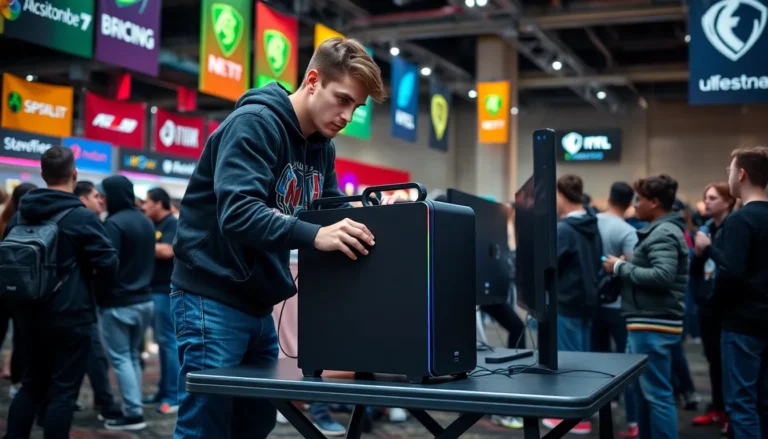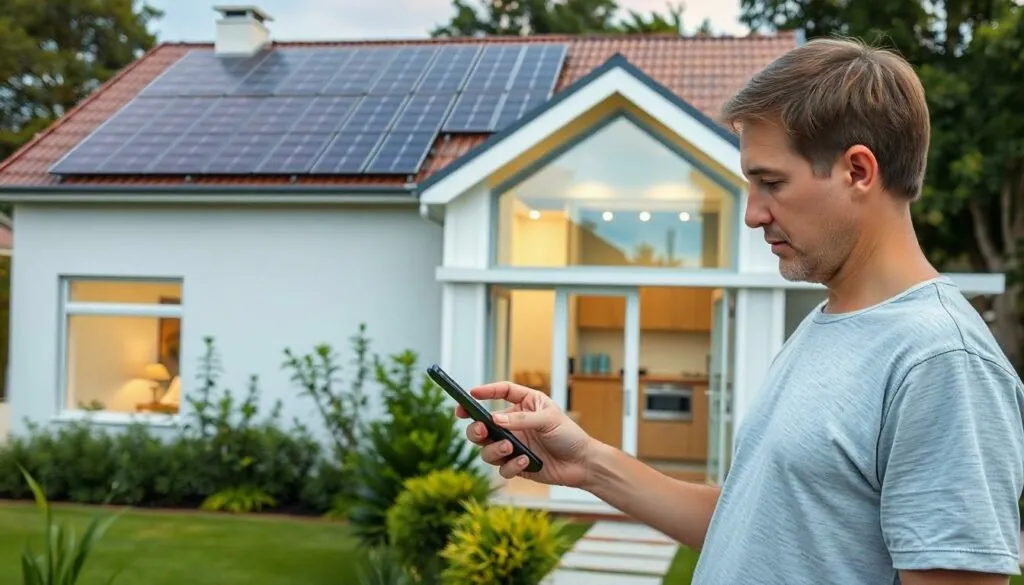Table of Contents
ToggleImagine waking up to a home that knows you better than your best friend. Tesla smart homes are turning this dream into reality, blending cutting-edge technology with everyday living. Gone are the days of fumbling for light switches or adjusting the thermostat like it’s a Rubik’s cube. With Tesla’s innovative solutions, your home becomes a responsive, energy-efficient sanctuary that anticipates your needs.
Overview of Tesla Smart Homes
Tesla smart homes represent a fusion of innovative technology and sustainable living. These homes utilize sophisticated systems to automate functions like lighting and temperature control, improving convenience for residents. Through intuitive features, Tesla’s solutions can adapt to user preferences over time, resulting in a personalized living experience.
Energy efficiency stands out in Tesla smart homes. Homeowners benefit from advanced energy management, minimizing electricity consumption while maximizing comfort. Utilizing solar power generation, these homes can draw energy directly from the sun, often reducing monthly utility bills.
A seamless integration of devices characterizes Tesla smart homes. Appliances and systems communicate across a centralized platform, allowing users to manage operations through a mobile app. This connectivity ensures that lighting adjusts based on occupancy, and HVAC systems optimize energy usage automatically.
Tesla’s commitment to sustainability extends to its home designs. By implementing eco-friendly materials and energy-efficient technologies, these homes contribute to a reduced carbon footprint. Homeowners play a pivotal role in this mission, benefiting both personally and environmentally.
Security features enhance overall safety within Tesla smart homes. Advanced surveillance systems provide real-time monitoring and alerts, enabling residents to keep an eye on their homes remotely. Smart locks offer keyless entry and can be programmed to give access to guests without compromising security.
Overall, Tesla smart homes embody the future of living, combining luxury with sustainability and technology. These homes are not just residences; they represent a lifestyle that embraces efficiency, safety, and convenience. The integration of intelligent systems allows for continuous evolution in home management, aligning with the needs and habits of modern homeowners.
Key Features of Tesla Smart Homes

Tesla smart homes incorporate advanced features that enhance user experience and promote sustainable living. Each aspect contributes to a modern lifestyle tailored for efficiency and convenience.
Energy Efficiency
Energy efficiency stands at the core of Tesla smart homes. These residences utilize solar panels that convert sunlight into usable energy, drastically lowering electricity bills. Smart energy management systems actively monitor usage, ensuring resources are allocated efficiently. Homeowners benefit from automated settings that adjust energy consumption based on occupancy patterns. Integrating battery storage enhances power resilience, providing backup energy during outages. These innovations support Tesla’s commitment to creating eco-friendly living spaces.
Home Automation
Home automation transforms daily life in Tesla smart homes. Intelligent devices communicate seamlessly, allowing users to control lighting, temperature, and security from a centralized mobile app. Automated systems enable tailored atmospheres suited for different activities, such as movie nights or dinner parties. Sensors detect presence and adjust settings automatically, minimizing unnecessary energy use. Enhanced security features include smart locks and surveillance systems, which people can monitor remotely, ensuring safety throughout the home. Such automation elevates convenience while promoting energy savings, making living more efficient.
Tesla Smart Home Technology
Tesla smart homes incorporate cutting-edge technology to streamline daily living. These homes focus on efficiency, sustainability, and user convenience through innovative systems.
Solar Energy Solutions
Solar energy solutions form the backbone of Tesla smart homes. Homeowners can install solar panels to harness renewable energy. By capturing sunlight, these systems significantly reduce reliance on traditional electricity sources. Many Tesla smart homes use solar power to charge batteries while generating surplus energy for the grid. This shift lowers electricity bills and promotes environmental responsibility. Homeowners benefit from cleaner energy and increased home value, making solar solutions an essential aspect of Tesla’s eco-friendly approach.
Powerwall and Energy Storage
Energy storage is a vital component of Tesla smart home technology. The Powerwall acts as a residential battery system, storing energy generated from solar panels. This feature ensures homes remain powered during outages and peak demand periods. By managing energy usage efficiently, the Powerwall allows homeowners to take full advantage of their solar investment. Homeowners can access stored energy during high electricity cost periods, further decreasing monthly expenses. This energy independence contributes to a more sustainable and resilient home environment, firmly establishing Tesla’s commitment to innovative energy solutions.
Benefits of Tesla Smart Homes
Tesla smart homes offer numerous advantages that enhance both daily life and environmental responsibility. With technology that prioritizes energy efficiency, these homes provide cost-effective solutions for homeowners.
Cost Savings
Significant reductions in utility bills are a primary benefit of Tesla smart homes. Solar panels generate renewable energy, leading to lower reliance on traditional electricity. Monthly savings add up as smart energy management systems optimize energy consumption based on real-time usage and occupancy patterns. Battery storage through the Powerwall ensures that homeowners can utilize stored energy during peak periods. Additionally, automated functions reduce wastage by adjusting lighting and temperature settings efficiently. This combination of features contributes to substantial long-term savings for residents.
Environmental Impact
Tesla smart homes promote a sustainable lifestyle by integrating renewable energy solutions. Solar energy harnessed through installed panels reduces dependence on fossil fuels, lowering the carbon footprint of households. Battery systems facilitate energy independence, allowing owners to maintain power during outages while minimizing reliance on the grid. Smart technology further enhances environmental benefits by maximizing energy efficiency and minimizing waste. Homeowners contribute to a cleaner planet while enjoying modern conveniences and personalized energy management. By choosing Tesla smart homes, individuals actively participate in shaping a sustainable future.
Challenges and Limitations
Tesla smart homes face several challenges and limitations that affect their widespread adoption. High initial costs represent a significant barrier for potential homeowners. Investing in solar panels, battery systems, and smart home technology incurs substantial expenses, which may deter some buyers.
Integration issues also arise when combining various devices and technologies. Ensuring compatibility among smart devices from different manufacturers proves complex. Homeowners often face difficulties when trying to create a cohesive system, leading to inefficiencies in home automation.
Limited availability of resources affects the implementation of Tesla smart homes. Access to Tesla products, such as solar panels and Powerwall batteries, remains inconsistent in some regions. Those living in areas with limited service offerings encounter challenges when attempting to adopt this technology.
Data privacy and security concerns present additional limitations. The more interconnected the systems become, the greater the potential risk of data breaches. Homeowners may experience unease regarding the security of their personal data, which could lead to hesitancy in embracing smart home technologies.
Regulatory hurdles can impact the feasibility of solar installations. Some local policies and building regulations impose restrictions on the use of solar energy systems. Navigating these regulations often proves challenging, dissuading homeowners from making the transition to smart living spaces.
A lack of awareness about the benefits of Tesla smart homes contributes to their slower adoption. Many individuals remain uninformed about energy savings and convenience offered by smart technologies. Increasing public education on smart homes could foster greater acceptance and accelerated growth in this market.
Tesla smart homes are paving the way for a new era of living that emphasizes efficiency and sustainability. By merging advanced technology with renewable energy solutions, these homes not only enhance comfort but also promote a greener lifestyle. Homeowners benefit from reduced utility bills and increased energy independence, making it an attractive option for those looking to invest in the future.
Despite challenges like high initial costs and integration issues, the potential for innovation in this space remains significant. As awareness grows and technology evolves, Tesla smart homes could become a standard for modern living. Embracing this trend means stepping into a world where convenience and sustainability coexist seamlessly.







